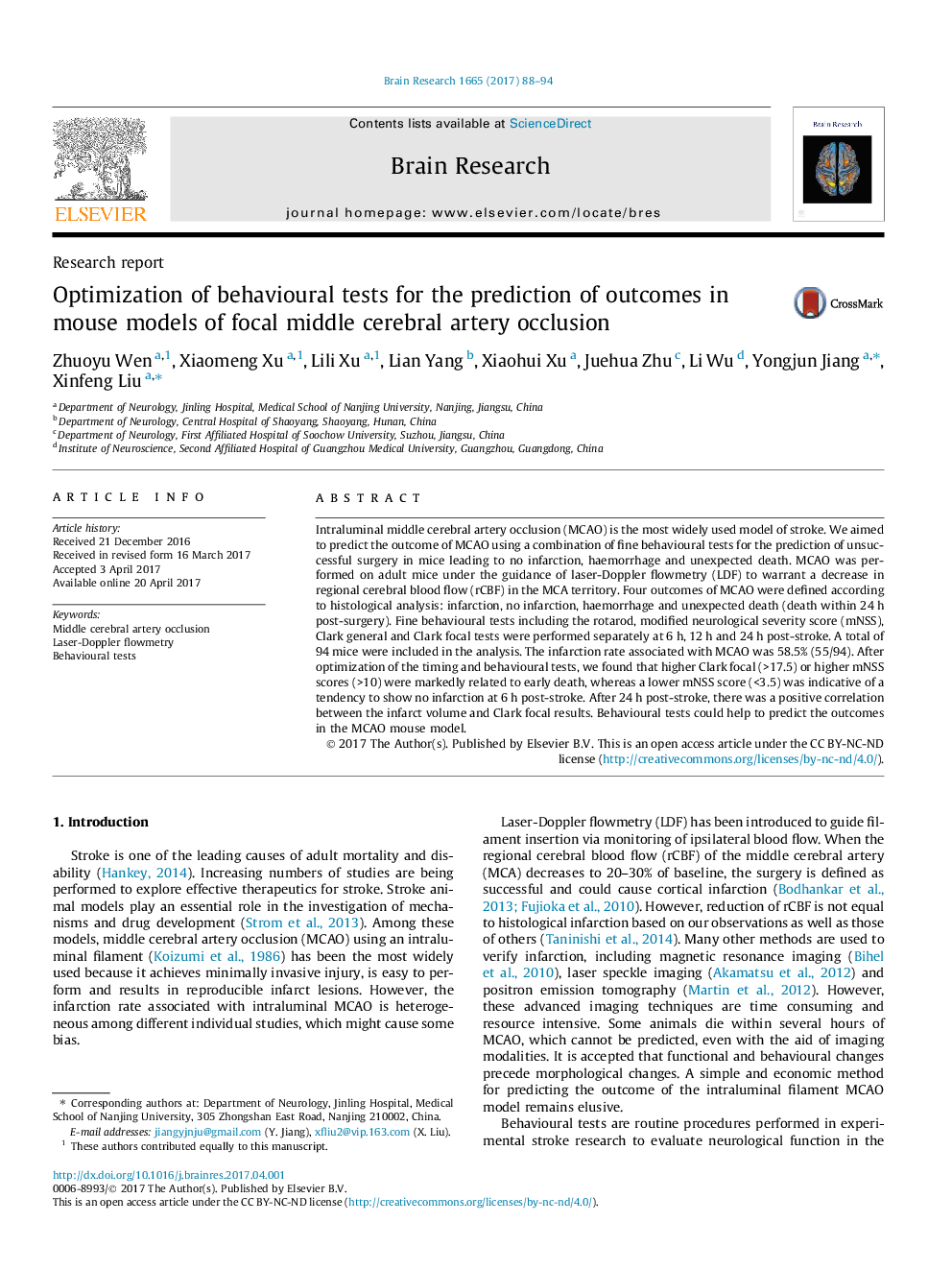| Article ID | Journal | Published Year | Pages | File Type |
|---|---|---|---|---|
| 5736797 | Brain Research | 2017 | 7 Pages |
Abstract
Intraluminal middle cerebral artery occlusion (MCAO) is the most widely used model of stroke. We aimed to predict the outcome of MCAO using a combination of fine behavioural tests for the prediction of unsuccessful surgery in mice leading to no infarction, haemorrhage and unexpected death. MCAO was performed on adult mice under the guidance of laser-Doppler flowmetry (LDF) to warrant a decrease in regional cerebral blood flow (rCBF) in the MCA territory. Four outcomes of MCAO were defined according to histological analysis: infarction, no infarction, haemorrhage and unexpected death (death within 24Â h post-surgery). Fine behavioural tests including the rotarod, modified neurological severity score (mNSS), Clark general and Clark focal tests were performed separately at 6Â h, 12Â h and 24Â h post-stroke. A total of 94 mice were included in the analysis. The infarction rate associated with MCAO was 58.5% (55/94). After optimization of the timing and behavioural tests, we found that higher Clark focal (>17.5) or higher mNSS scores (>10) were markedly related to early death, whereas a lower mNSS score (<3.5) was indicative of a tendency to show no infarction at 6Â h post-stroke. After 24Â h post-stroke, there was a positive correlation between the infarct volume and Clark focal results. Behavioural tests could help to predict the outcomes in the MCAO mouse model.
Related Topics
Life Sciences
Neuroscience
Neuroscience (General)
Authors
Zhuoyu Wen, Xiaomeng Xu, Lili Xu, Lian Yang, Xiaohui Xu, Juehua Zhu, Li Wu, Yongjun Jiang, Xinfeng Liu,
